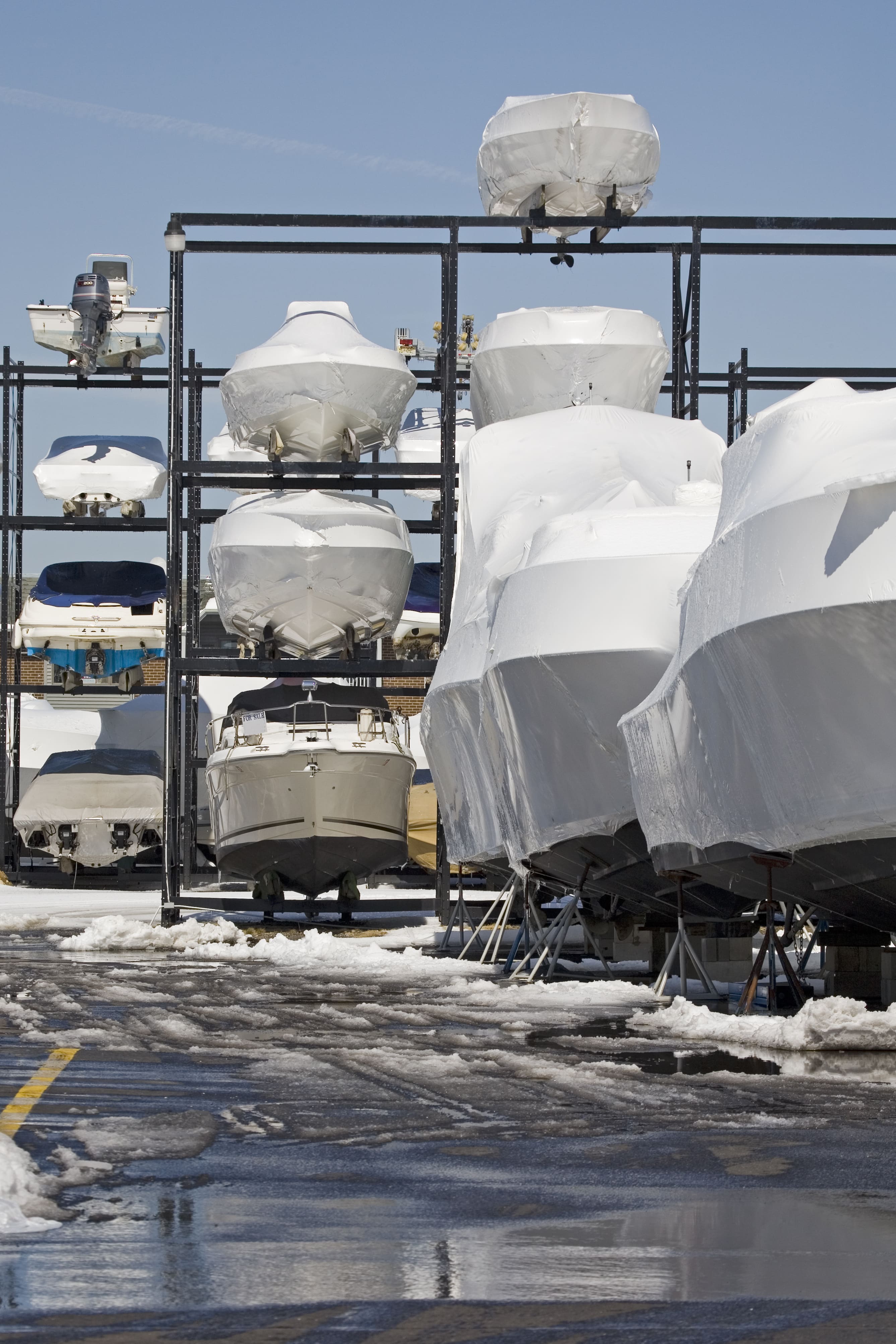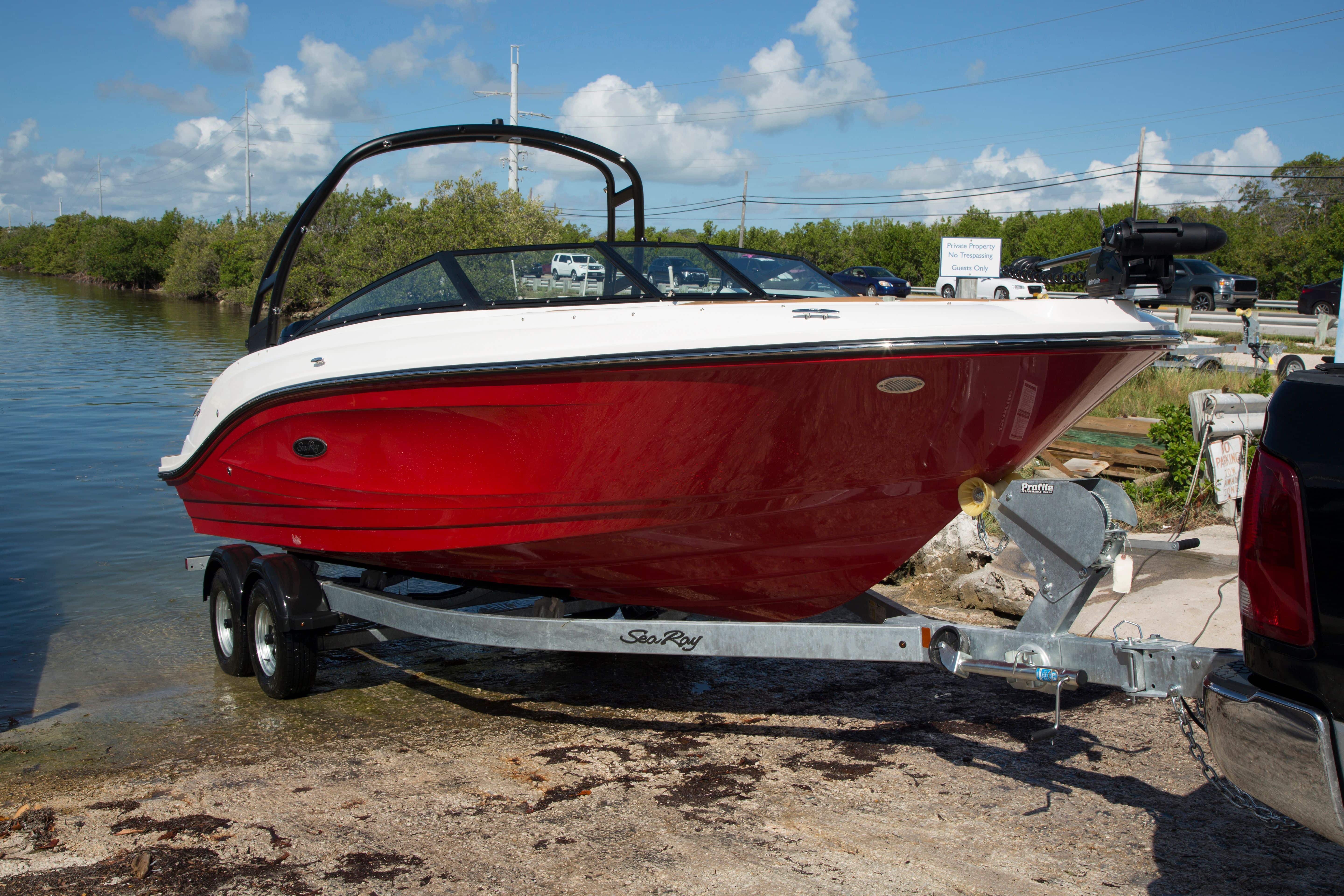As the colder months approach, you need to have a plan in place for your boat. If you don’t take care of it properly in the off-season, you could have a mess on your hands come spring. This could leave you with a big repair bill and time spent at home on the couch waiting for the mechanic when you could be out on the water having fun. In this article, I’ll go over some things you need to know to keep your boat protected this winter.
Storage Options

The first step in winter preparation is to find a place to store your boat. If you live in a climate with mild winters, you can usually just leave your boat in the slip or at the dock year-round. However, if you live in a climate with moderate to severe winters, you’ll need to remove it from the water. This leaves you with a few options that vary by your location and budget, as storage can get very expensive.
The most cost-effective option is to store your boat on your property, as you won’t have to pay a storage fee for that. Ideally, you have a space in your garage. It would be a bonus if it’s climate-controlled. The next best option is outside with some sort of overhead protection from a carport or awning. Carports are not terribly expensive and a worthwhile investment if you don’t have one. If this is not possible, you can store your boat outside without any sort of overhead protection, but make sure you have a good boat cover first.
If you don’t have space at home for your boat or you prefer not to store it without overhead protection, you can reach out to nearby storage facilities. Fair warning, you’ll fork over a good chunk of change to keep your boat protected at a storage facility which is why I always recommend researching options at home first.
The types of facilities available range from outdoor boat yards to indoor climate-controlled buildings. If you have a large boat such as a sailboat, outdoor storage may be your only option. Naturally, indoor storage is going to be better for your boat, but not everyone’s wallet or boat type allows for that. My advice is to shop around to find what works best for you and your situation.
Boat Covers

Regardless of which storage option you go with, you should still use a boat cover. You’ll need a much nicer cover if you’re storing your boat outside without overhead protection than you would in an indoor climate-controlled environment. A cover protects your boat against a wide variety of things – from rodents to elements like snow, rain, and UV exposure.
There are many different cover options. For a more detailed explanation, check out Choosing the Right Cover for Your Boat.
Trailering

If you have the means to transport your boat via trailer to either a storage facility or your personal property, you’ll need to make sure your trailer is up for the job. There’s always at least one broken-down boat trailer on the side of the road at the start or end of each season. Don’t let that be you. Get a head start on maintenance now so you don’t run into issues later.
I understand you may only use your trailer once a year to either pick up your boat from the dock or drop it off. However, if you want to ensure a worry-free trip each time, you’ll need to make sure you’re properly maintaining the trailer just as you do your boat.
If you would like to dive into this further, check out The Complete Maintenance Guide for Your Boat Trailer.
Boat Maintenance

Once you have a location and cover picked out, you’ll need to start your annual maintenance. This will help ensure you catch any potential problems before next season, allowing you to spend as much time on the water as possible. If you don’t want to worry about the hassle of maintenance in the off-season, most marinas or local mechanics can take care of everything for you. However, if you want to learn how to do it yourself, which I recommend and which saves you some money in the process, take a peek below at this checklist.
Drain

There are likely a few different types of tanks on your boat depending on the type: live wells, ballast, bilge, etc. Be sure to drain all of these with a pump like the Johnson Pump Cartridge Bilge Pump before storage, as leftover moisture can make your boat susceptible to mold and mildew.
Clean

The best time to clean your boat is when it’s on land. This allows you to thoroughly scrub the hull and get rid of any stuck on marine scum. Typically, a mild detergent and some elbow grease will get the job done, but if you want to make things a bit easier on yourself, you can use a specialized cleaner like the Star Brite Instant Hull Cleaner to better break down scum. This will help reduce the amount of elbow grease needed. Just make sure to check that the cleaner can be used on your specific hull material. Once the hull is clean, work your way to the deck and repeat the process. After cleaning, let the boat dry out in the sun.
Wax

You don’t need a mirror-like finish, but a good coat of wax, like the Meguiar’s Flagship Premium Marine Wax, on the hull will help prevent scum buildup next season and give it a nice new look. It will also allow you to closely examine your hull to find any damage or needed repairs.
Engine Oil

It’s very important to prep the engine before putting your boat away for the off-season. The engine, as I’m sure you are aware, is a vital part of your boat and needs proper attention to ensure trouble-free operation. The first thing I recommend is an oil change using one of our oil change kits. While changing your oil, make sure to inspect the old oil coming out of the engine. If you see any metal flakes or a milky color, you may have issues. In this case, a trip to your local mechanic may be needed before refilling. Metal flakes indicate abnormal wear caused by an internal issue, and a milky color indicates water or coolant has gotten into the oil, usually caused by a bad gasket or seal.
Engine Coolant

The cooling system also requires maintenance in the off-season. This varies by engine type and cooling method, but it usually entails draining water from the block and pumping in anti-freeze.
It’s very important that you use marine anti-freeze like the Champion RV & Marine Antifreeze. This is not the same as what you might put in your car. Automotive anti-freeze is toxic to marine life.
Fuel System

You must fill your fuel tank and add a stabilizer like the STA-BIL Fuel Stabilizer before storing your boat. Once the stabilizer has been added to the tank, run the engine to allow it to make its way inside. The addition of a fuel stabilizer helps to reduce condensation build-up within the fuel system.
Fogging Oil

Although not always required, most manuals recommend using some sort of fogging oil, like STA-BIL Fogging Oil, inside the engine before storage. Fogging oil is used to protect the engine’s internal components from rust and corrosion. It’s typically sprayed through the intake and inside the cylinders via the spark plug holes.
Battery

The best thing you can do for your battery in the off-season is to remove it from the boat and store it inside a climate-controlled area. Exposing your battery to frequently cold temperatures can deplete its life. In addition, you’ll want to ensure it stays topped off using a battery maintainer, like the ProSport 1.5A Battery Maintainer, on a trickle charge cycle.
Lower Unit Oil

If you have an outboard motor, you need to change the lower unit oil. This is very easy to do with a kit like the Marine Engine Lubrication Bundle, but essential for proper maintenance. Like your engine oil, you want to ensure you don’t have a milky color or metallic flakes in the old lubricant, as these indicate damage.
Drive Belts

To prevent cracks from stress and extreme temperatures during the off-season, drive belts should be either loosened or removed. This helps extend their life, so they don’t have to be replaced as often. If your belts are cracked and need replacing, we have a large selection of belts to choose from.
This isn’t a complete list of the maintenance requirements for every boat, but rather some good general tips to start with. For an exact list of the maintenance requirements for your boat and engine, you should consult your owner’s manual.
Replacements/Upgrades

Now that the basics have been covered, it’s time to talk about something more fun – upgrades. Perhaps the stereo system needs an overhaul, maybe your pontoon boat seats are aging, or you finally want to treat yourself to a new fish finder. Now is a great time to do all of this so you don’t waste any time on the water next season. It’s also a great time to inspect and replace all your safety equipment like life jackets, throwables, and fire extinguishers so you don’t run into issues with your local water patrol. Be sure to check out Overton’s for all your upgrades, wants, and replacement needs.
If you do anything differently to protect your boat during the winter, let us know in the comments below!





[…] Keeping Your Boat Protected During the Off-Season […]
[…] at the end of the season, you should look over your trailer to see if any repairs are needed in the offseason and address maintenance needs. The first place to look is your tires, but once you’ve gone over […]